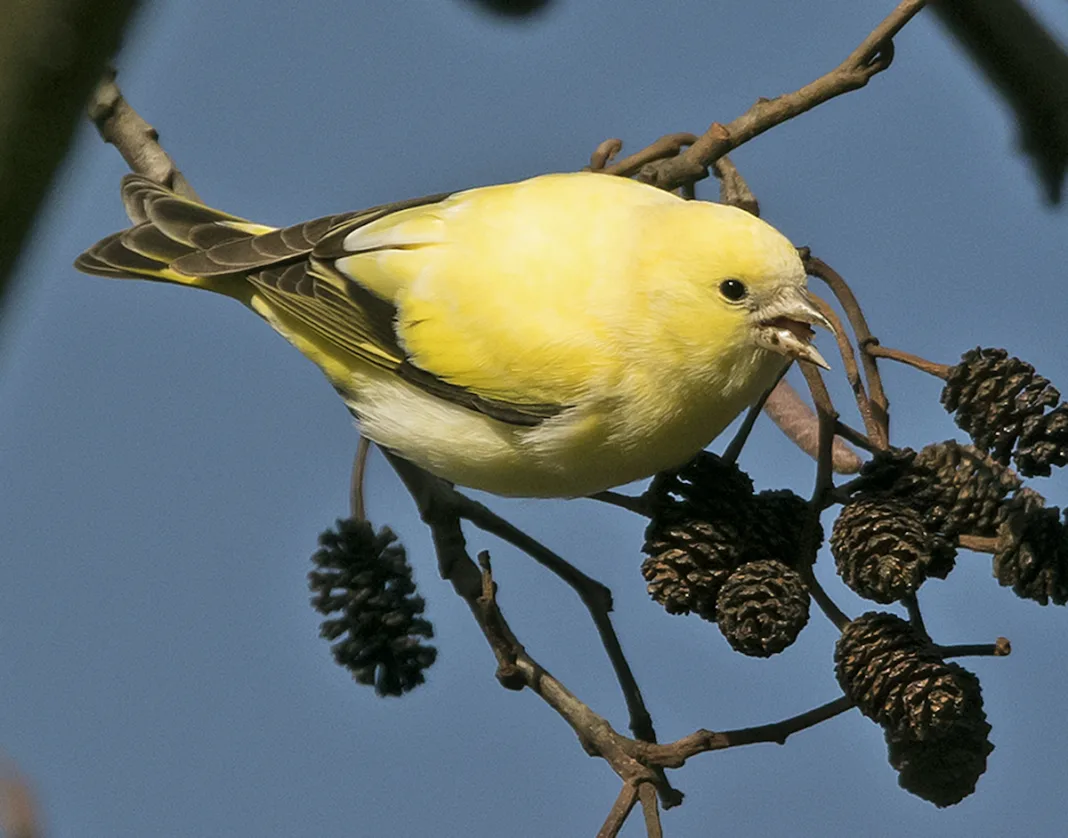In Part One, HEIN VAN GROUW explained exactly how the London fancy canary progresses from an all-dark first plumage to assume its classic pattern via successive moults. Here, in Part Two, he shows that the mutation concerned, which causes ‘progressive greying’, is already well understood and occurs in nature
IT GOES without saying that progressive greying in yellow or predominantly yellow canaries is hardly noticeable. Many breeders are probably subconsciously happy that slightly variegated birds turn out completely yellow, without paying much attention to it.
However, as I said, within the Lizard, the mutation seemed to have disappeared, and with it the canaries with the typical pattern of the London fancy. In recent years, however, Piet Renders, a breeder in the Netherlands, brought back the London fancy. Whether the mutation spontaneously recurred in a stud of canaries or was still present in other breeds and recognised as such was not known. But the fact is that without the mutation it would not have been possible to recreate the London fancy canary, and Piet did a great job by utilising the mutation. His current show birds are totally comparable with the classic examples pictured in the earlier books.
Two distinct mechanisms
Although leucism (also known as pied or variegation) is very common in domestic and captive birds, it is rather rare in the wild. Far more common causes for the lack of pigmentation in feathers are aberrations that cause a progressive disappearance of the melanin cells (= progressive greying). In both leucism and progressive greying, white feathers (or yellow, in species where carotenoid pigments are also present) are produced by the absence of melanin pigment-producing cells. In leucism, the absence of melanin cells is congenital and always inheritable, therefore the white pattern is already present in juvenile plumage and the amount of white feathering does not change with age.
In progressive greying, by contrast, loss of pigment-producing cells results in age-related white feathering, and juvenile plumage is always normal-coloured. The phenomenon, however, is generally not related to “being old”; it can start at any time after the normally pigmented juvenile plumage is fully developed. Furthermore, the loss of pigment cells appears to be progressive: the bird will gain randomly an increasing number of white feathers following every moult, and in many birds the entire plumage eventually becomes white.
Different forms of progressive greying appear to exist, but the causes of most of these are unknown. Some are clearly inheritable and based on a single mutation, such as the one in the London fancy canary. Other forms, however, do not seem to be directly related to inheritance and may be entirely age-related, while in others the progressive loss of pigment cells can be a result of (heritable) disorders such as vitiligo (pigment disease), or related to environment.
The mutation present in the London fancy canary can occur in any species and is recorded in several wild birds. If it occurs in songbird species with a similar moulting pattern to the canary, then it will result in the typical pattern of dark flight and tail feathers (melanin) and a clear body plumage without melanin after the first moult in their first year. After the second moult the following year, all of the plumage may be without melanin.
In non-songbirds, which normally have a different moulting pattern, the birds may become all white in their first year. A good example is an extinct species of coot which lived on a small remote island located c600km east of Australia! In a future article I shall discuss these further.
● Many thanks to Huw Evans who kindly shared his knowledge regarding the history of the London fancy canary.
Hein van Grouw is the senior curator of birds at the Natural History Museum at Tring, Hertfordshire.
Find more news and articles like this on the Cage & Aviary Birds website. Subscribe to Cage & Aviary Birds magazine now.


